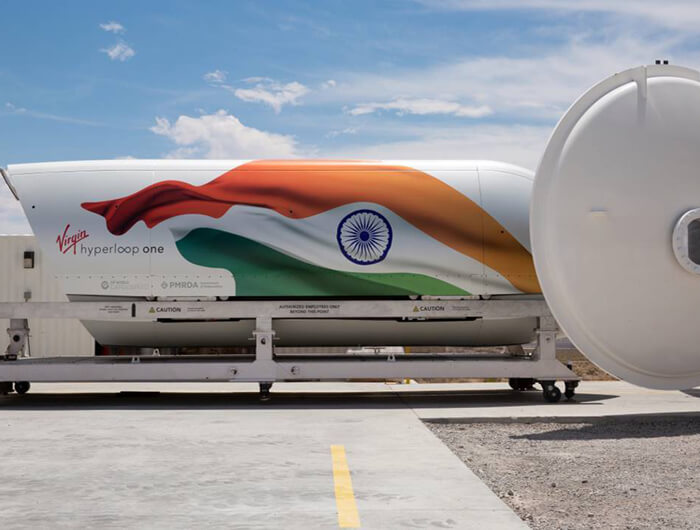Hyperloop In India

Hyperloop is a high-speed passenger and freight transportation system. Its term Hyperloop was coined by Elon Musk which employ three components for it to work: tubes, pods, and terminals. The pods are transported at high speed, through the length of low-pressure tubes that are elevated off the ground, due to a lack of air resistance or friction. Hyperloop has the potential to travel at speeds in excess of 1125km/h (700mi/h) which would reduce travel times over medium-range distances (up to 1,500 kilometers (930 miles)).
Hyperloops are the fifth era of pneumatic tube transportation dreams. The era kicked off in 2013 when Elon Musk published what is reverentially referred to in the Hyperloop world as The Alpha Paper. Characteristically, the Alpha Paper makes no mention of any of the previous four eras.
Hyperloop is a technology proposed by inventor and businessman Elon Musk, who is behind the electric car company Tesla and the commercial space transport company SpaceX. Musk’s initial idea was to transport people from San Francisco to Los Angeles in half an hour within a pressurized tube system. The Virgin Hyperloop test run was conducted on Nov. 9, 2020, on a 500-metre track in Las Vegas in the US with a pod, travelling with passengers inside an enclosed tube at more than 100 miles per hour (161 km/h).
Magnetic levitation lifts a train car above a track, as the magnets’ like poles push the train upward. The magnets also propel the train as like poles repel and push the train forward, and the opposite poles attract and pull the train forward. Magnetic levitation has been used on some train systems since the 1970s.
The concept of using low-pressure or vacuum tubes as part of a transport system has a long heritage. The idea for improving travel speeds by reducing air resistance in a controlled tube setting was first proposed by various figures in the early 19th Century. Thirty years later, something resembling a pneumatic tube transit boom occurred, or as they were called at the time, “atmospheric railways.” The Dalkey Atmospheric Railway in Dublin operated between 1844 and 1854 at a top speed of 40 mph—not much faster, if at all, than regular trains of the era—on a track a little less than two miles long, running small carriages every half hour.
Travel between places is achieved by air or rail travel though are faster but they require additional travel time to/from airports, advance time for departure time, security restrictions, and expense. Hyperloop is a potential alternative to travelling over medium distances between city centers, which combines the convenience of rail travel with the speed of air travel. Hyperloop systems can run either above ground or below ground. Imagine stepping into a pod—suitcase in hand—and zipping from city to city at 760 miles per hour through tubes. Imagine suppliers using these pods to transport goods to grocery stores much faster than can be delivered by truck.
Hyperloop in India
Virgin Hyperloop-DP World Consortium is approved by Maharashtra government for its Mumbai-Pune route. The project was planned in February 2018 but was stalled due to coronavirus outbreak. Virgin Hyperloop has earlier this year announced its partnership with the Bangalore International Airport in order to conduct test for the proposed route from the city airport. NITI Aayog has recently formed a panel to check the viability of Virgin Hyperloop technology in India.
Travellers from Mumbai to Pune have to take either train, bus, or car to cross 160 kilometers distance. The train journey can take up to 4 hours as it involves multiple exchanges, sometime during less congestion it may take under 3 hours. The proposed Mumbai-Pune Hyperloop Project would link central Pune and Mumbai in less than 30 minutes, supporting up to 200 million passenger trips annually. The Government of Maharashtra has declared the Pune-Mumbai Hyperloop Project as a public infrastructure project, with the Virgin Hyperloop One-DP World Consortium as the Original Project Proponent (OPP). If everything goes smoothly, it will be the first full-scale hyperloop system in operation in the world.
The Hyperloop project have received a significant political and government support in India. India is not the only country seeking to pioneer hyperloop technology, Dubai and Abu Dhabi have also developed plans with hyperloop. Mexico City and Guadalajara are also hoping to be one of the first to showcase the new technology.
Suggested Read: Shimla Kalka Toy Train
